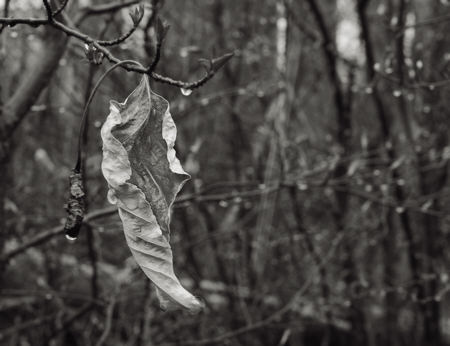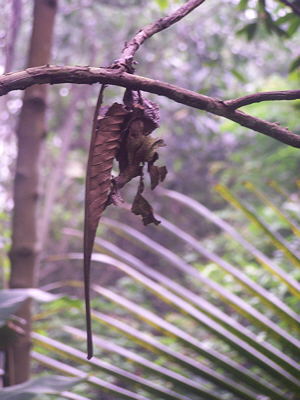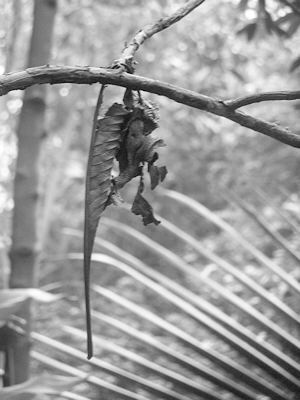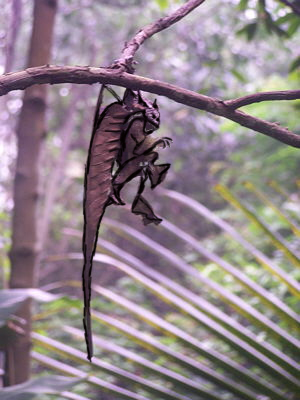It appears I’ll be making good on my recent threat to re-activate my dormant Sourdough Trail project. But never fear, I do not intend to flood A&P with posts on that topic. In fact, because, through A&P, I’ve realized how blogs can be useful, I’ve decided to create a new one specifically focused on my project. I’m in no way attempting to create a popular or active site; I simply think the blog structure is appropriate to the nature of what I’m doing, namely a variation on the psychogeography project discussed here a few months ago (and which I still hope to carry out this year). This one has similar concerns, but will be in a familiar rather than a new setting, and will be over a longer time scale, months rather than days. In essence, I want to observe how my sense of that particular place evolves and how it relates to the photography I do there. But if you want to know more, visit Along Sourdough Trail.

Part of my motivation was to learn about blog design by working with my own WordPress site. That’s been fun so far, and I may not be done yet. But I think it’s stable enough to present in public, and I welcome any comments you might have.
But my main question is whether you know of good examples of blogs devoted to specific projects. I enjoy reading quite a few blogs–must post on that sometime–but none have such a degree of focus. One can, in principle, achieve a similar effect by creating a blog category for the project and choosing to view only posts in that category, but that still doesn’t allow the freedom of a separate design for the project. True, such personal project blogs may often be password restricted or unlinked to, so there might be many I’d be interested in if I knew of them.

Steve I really really like this picture because it reminds me of something and makes my imagination play up… wish I could post a picture responde but maybe I should just email it to you…
Angela,
I’d love to see it, please send it by email. If you want to share it, I can also post it in a comment.
A Steinian moment — I thought I was here (A&P), when in fact I was there (Sourdough Trail blog), so I thought I’d transcribe:
Re: “One might posit that maximum sharpness throughout makes for the most “accurate” image, but it’s clear that it gives rise to an inevitable emotional response that may not at all represent what a person (in particular, the photographer) experiences in the actual setting.”
Regardless of subject, framing, and focal length &c., can these images be “accurate” in the sense of “objective” without color? (I hold that black, white, and gray are colors, but I seem to be in the minority.) I wonder if the limited palette, by removing a layer of overt information and knee-jerk prettiness, encourages a deeper engagement — that is, since leaves are not usually gray, the viewer must look more carefully for other overt clues of leafness in order to understand the sign “leaf” — and whether this initial demand to figure it out leads inevitably to the imposition of a kind of story and/or an emotional overlay?
Have you seen the Scientific American Reports issue on perception? The tag line on the cover is “105 Mind-Bending Illusions: What They Reveal About Your Brain.” The articles inside explore some fascinating anomalies about how we don’t really see what’s in front of us, instead the brain takes input and “makes sense of it” — sometimes by distorting the input rather severely.
Very femenine, the delicacy of a dress the leaf is wearing… I think is the rain drops as well that reminds me of tears …
Here’s Angela’s picture, in her original color and, just for variety, in a black and white version with slightly increased contrast.


If I had to make a gender generalization (which doesn’t normally occur to me), I would say her colors seem inclined towards the feminine, but the background with the bright white spears may have a more aggressive/masculine feel. In any case, I really like all the strong lines in her composition. That’s one thing I’ve been more aware of recently: the importance of background, even if out of focus.
Melanie,
I’m glad there was a there there for you to comment on. And I’ll probably respond there as well, after further some thought your comment deserves. I totally agree that rendering in black and white–a layer of abstraction–tends to block some of the “knee-jerk” reactions one has, just because it’s different. It’s a general rule that the mind is sensitive to differences from expectation. From my persepctive, it would be great if this does indeed lead to further engagement with the image, though I suspect some people may instead be “turned off” by a monochrome image. I also agree that the longer one looks at any image, the more likely one is to begin seeing/constructing stories about it, “making sense” of it, as you say.
Hmmm, this is giving me some ideas…more later…
Thanks for the tip on the Scientific American issue, I’ll look for it. I’ve been very interested in this sort of thing for years, even once teaching a course on it.
Now that I think about it, I’m not so sure that b&w is abstraction — maybe it’s an echo or iteration of night vision, and subliminally unsettling because of traditional associations with greater and lesser forms of night terrors…?
I’ve been thinking a lot about color lately and am reading an interesting, somewhat eccentric, book about where pigments come from and about color lore. [Color: A Natural History of the Palette by Victoria Finlay]
I have much to learn about photography
Angela and Steve,
At first glance, the black and white version of Angela’s picture seems more compelling, perhaps because the wonderful lines are easier to comprehend? But at second look, the color picture draws me in.
I feel a magic in the shimmering lavender, yellow/green tones that is lost in b&w.
The color version makes me feel happy.
melanie,
I called the rendering in monochrome a sort of abstraction in the simplistic sense that some information is being removed from the original image, just as if colors were greatly altered or shapes were distorted, etc. A purely subtractive abstraction starting from conventional representation is a limited and anemic one, though it can be a productive start. Most work I would call abstract is very constructive and doesn’t necessarily start from reality. Actually, trying to define abstraction is a long term, if elusive, goal of mine.
In any case, your idea of black and white simulating night vision seems extraordinarily rich, and for all my pondering I can’t believe I haven’t thought of it in those terms before. I have usually put it that B&W tends to evoke an air of mystery, and perhaps even a frisson of trepidation (if the black dominates). But that’s pretty vague, while the plausible origin in experience of night leads to all kinds of associations.
With Angela’s picture, I agree with Birgit and would surely prefer the color version. The black and white rendition helps make clear what the color does.
Steve,
Good luck with your Along the Sourdough Trail.
Most artists feel more comfortable devoting their energy to their own blog. Think of the many artists who first participated here on A&P and then preferred to focus their activity on their own blog.
In that sense, art and science move in opposite directions. Artists feel more comfortable as individuals and scientists operate more and more in teams, not just teams consisting of members of one laboratory but of members of several different laboratories.
By some, scientists used to be considered to be sociopaths because they (a) operated in solitude or (b) acted as the almighty head of their own group. That is slowly changing because, working as teams consisting of several groups, does require social skills.
Scientists work as multi-laboratory teams out of necessity because the nature of modern experiments requires multiple methods and probes – a change in the sociology of the science community.
By contrast, artistic expression appears to remain very much a personal achievement.
Birgit,
It certainly makes sense to concentrate energy on what’s most important, whether it involves blogging or not. I’m still interested in the general conversations we have here, and also in any discussion that might arise on the more focused project blog, though time is always an issue. Regardless of how that works out, I think the project blog will give me a little discipline and motivation, as well as serve as a place to share with the few who might be interested. I won’t mind at all if it’s the quietest place in the blogosphere.
These days it seems that more artists are making bigger and more technology-dependent art which also requires teams of planners, engineers and craftsmen. For example, Robert Irwin’s recent show in San Diego involved quite a few people. Still, I agree that scientists are more likely to work in teams than artists.
Steve,
It will not be the quietest place in the blogosphere . Your ‘Along Sourdough Trail’ pictures are great!
Steve,
Looking at your new gorgeous web site propelled me to continue with my own blog.
A couple of months ago, I had made the earlier entries in my blog private in preparation to improving on my web design. I bought books on web languages and enjoyed web design talk with my young friend Brent. But then reality hit in the form of a new exciting project at my day job. All I can hope for at the moment is to develop in more rudimentary form what you are doing on your ‘Along Sourdough Trail’. I will post whatever strikes my fancy and put of getting rid of the weird banner decorating my website to when I have more time.
Steve:
Your Sourdough series is excellent.
Now Steve what I find most incredible is that nobody can see what I find so obvious… and the only reason I took that picture is because I could see this little demon creature hanging from the tree branch…

I have traced it on Photoshop so you can have now an idea of it:
Mind you I do not take any substances except maybe a little hangover from red wine the previous night… this is purely my mind on daily basis…
Angela,
I did not see your creature, although I definitely did have sort of a sense of creepiness. I think that was due to the jagged edges of the leaf, and the fact that it was dark against a lighter background, the reverse of my photograph.
It reminds me of the monsters I saw in some phtographs from my Ghost Light series, going back to my first A&P post. So yours is not the only mind that sees these things, in fact I think it’s almost a part of the brain, like face detection.
Steve,
I was intrigued by your comment “But my main question is whether you know of good examples of blogs devoted to specific projects.”
I generally have several projects all running concurrently (probably just like everyone else) with parts of each project just stuffed into one blog on a chronological basis. I sometimes build a compendium page to collect all related posts.
I’d be interested to know of your experiences on treatments of various projects and ways of combining them together.
Here is a link to my last completed project as a compendium page. I find the compendiums lose something and gain something. I haven’t really sat down to analyze the difference or try to optimize the presentation of either approach.
http://rvewong.wordpress.com/storys/robin-chicks-from-birth-to-flight/
I have several other project compendiums in that blog that may be of interest as the approach in some is quite different.
I also noticed in doing my project blog thing, that I could not find good examples of others doing the same thing.
I know I would appreciate the vicarious experience of traveling along the path of other peoples projects.
I would also appreciate it if you have any sites that you could recommend.
Bob,
You’ve done a very nice job incorporating self-contained stories within your main blog. For me, there is no other personal blog, and in any case I want Sourdough Trail to be a self-contained project, especially as it’s rather large (one year?) enterprise. I’m sure there must be other, similar projects blogs out there, but the only one I know of is the Martin Doonan’s Processes of Nature photography blog.
I’ve also responded to your additional interesting remarks about structure over at Along Sourdough Trail.
Steve,
I appreciate your comments and I will check out Martins’ project.
I must say though I’ve been looking for other photo project blogs and not having much luck.
I’ll definitely be following yours. I appreciate failures, dead ends and ruminations as well as successes.
I’ll leave it to others to judge of dead ends. But I can guarantee ruminations and either success or failure. Two out of three’s not bad!